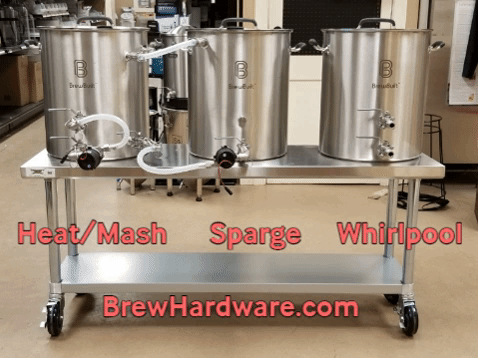Steven Sinclair
Well-Known Member
- Joined
- Apr 11, 2019
- Messages
- 106
- Reaction score
- 29
Here's what I have planned...

All fluid transfer connections are positioned at zero degrees at the front of the kettles, while the heating elements are positioned at 135 degrees (BK) and at -135 degrees (HLT). Does it make a difference as to the positioning of the fluid transfer connections on the kettle? Do the cooling coils, whirlpool arms, sparge arms, and pickup tubes need to be located away from the zero degree position or does it matter? I've seen kettles with both scenarios, but don't really know the logic behind it (if there is any).
Thanks in advance.

All fluid transfer connections are positioned at zero degrees at the front of the kettles, while the heating elements are positioned at 135 degrees (BK) and at -135 degrees (HLT). Does it make a difference as to the positioning of the fluid transfer connections on the kettle? Do the cooling coils, whirlpool arms, sparge arms, and pickup tubes need to be located away from the zero degree position or does it matter? I've seen kettles with both scenarios, but don't really know the logic behind it (if there is any).
Thanks in advance.






































![Craft A Brew - Safale S-04 Dry Yeast - Fermentis - English Ale Dry Yeast - For English and American Ales and Hard Apple Ciders - Ingredients for Home Brewing - Beer Making Supplies - [1 Pack]](https://m.media-amazon.com/images/I/41fVGNh6JfL._SL500_.jpg)





















